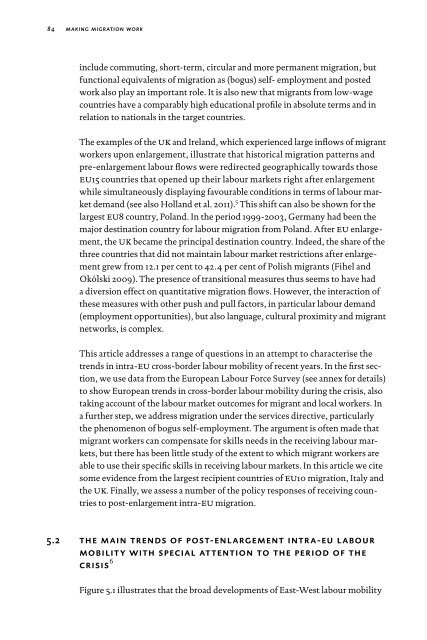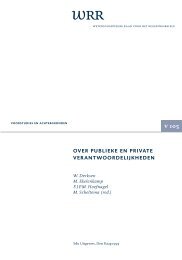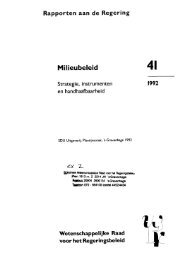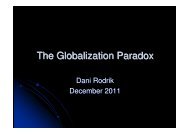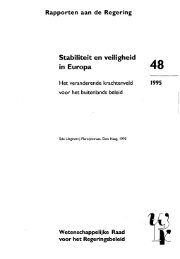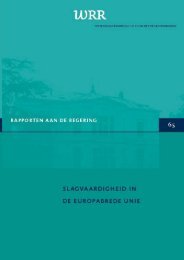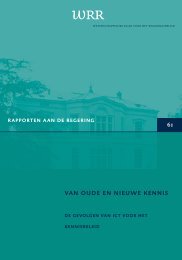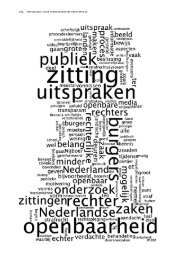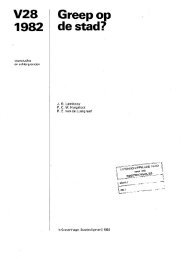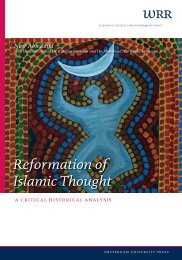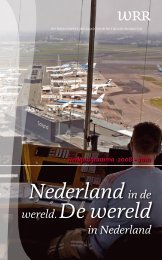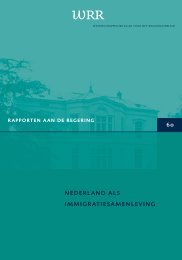Making Migration Work - Wetenschappelijke Raad voor het ...
Making Migration Work - Wetenschappelijke Raad voor het ...
Making Migration Work - Wetenschappelijke Raad voor het ...
- No tags were found...
You also want an ePaper? Increase the reach of your titles
YUMPU automatically turns print PDFs into web optimized ePapers that Google loves.
84making migration workinclude commuting, short-term, circular and more permanent migration, butfunctional equivalents of migration as (bogus) self- employment and postedwork also play an important role. It is also new that migrants from low-wagecountries have a comparably high educational profile in absolute terms and inrelation to nationals in the target countries.The examples of the uk and Ireland, which experienced large inflows of migrantworkers upon enlargement, illustrate that historical migration patterns andpre-enlargement labour flows were redirected geographically towards thoseeu15 countries that opened up their labour markets right after enlargementwhile simultaneously displaying favourable conditions in terms of labour marketdemand (see also Holland et al. 2011). 5 This shift can also be shown for thelargest eu8 country, Poland. In the period 1999-2003, Germany had been themajor destination country for labour migration from Poland. After eu enlargement,the uk became the principal destination country. Indeed, the share of t<strong>het</strong>hree countries that did not maintain labour market restrictions after enlargementgrew from 12.1 per cent to 42.4 per cent of Polish migrants (Fihel andOkólski 2009). The presence of transitional measures thus seems to have hada diversion effect on quantitative migration flows. However, the interaction ofthese measures with other push and pull factors, in particular labour demand(employment opportunities), but also language, cultural proximity and migrantnetworks, is complex.This article addresses a range of questions in an attempt to characterise t<strong>het</strong>rends in intra-eu cross-border labour mobility of recent years. In the first section,we use data from the European Labour Force Survey (see annex for details)to show European trends in cross-border labour mobility during the crisis, alsotaking account of the labour market outcomes for migrant and local workers. Ina further step, we address migration under the services directive, particularlythe phenomenon of bogus self-employment. The argument is often made thatmigrant workers can compensate for skills needs in the receiving labour markets,but there has been little study of the extent to which migrant workers areable to use their specific skills in receiving labour markets. In this article we citesome evidence from the largest recipient countries of eu10 migration, Italy andthe uk. Finally, we assess a number of the policy responses of receiving countriesto post-enlargement intra-eu migration.5.2 the main trends of post-enlargement intra-eu labourmobility with special attention to the period of thecrisis 6Figure 5.1 illustrates that the broad developments of East-West labour mobility


